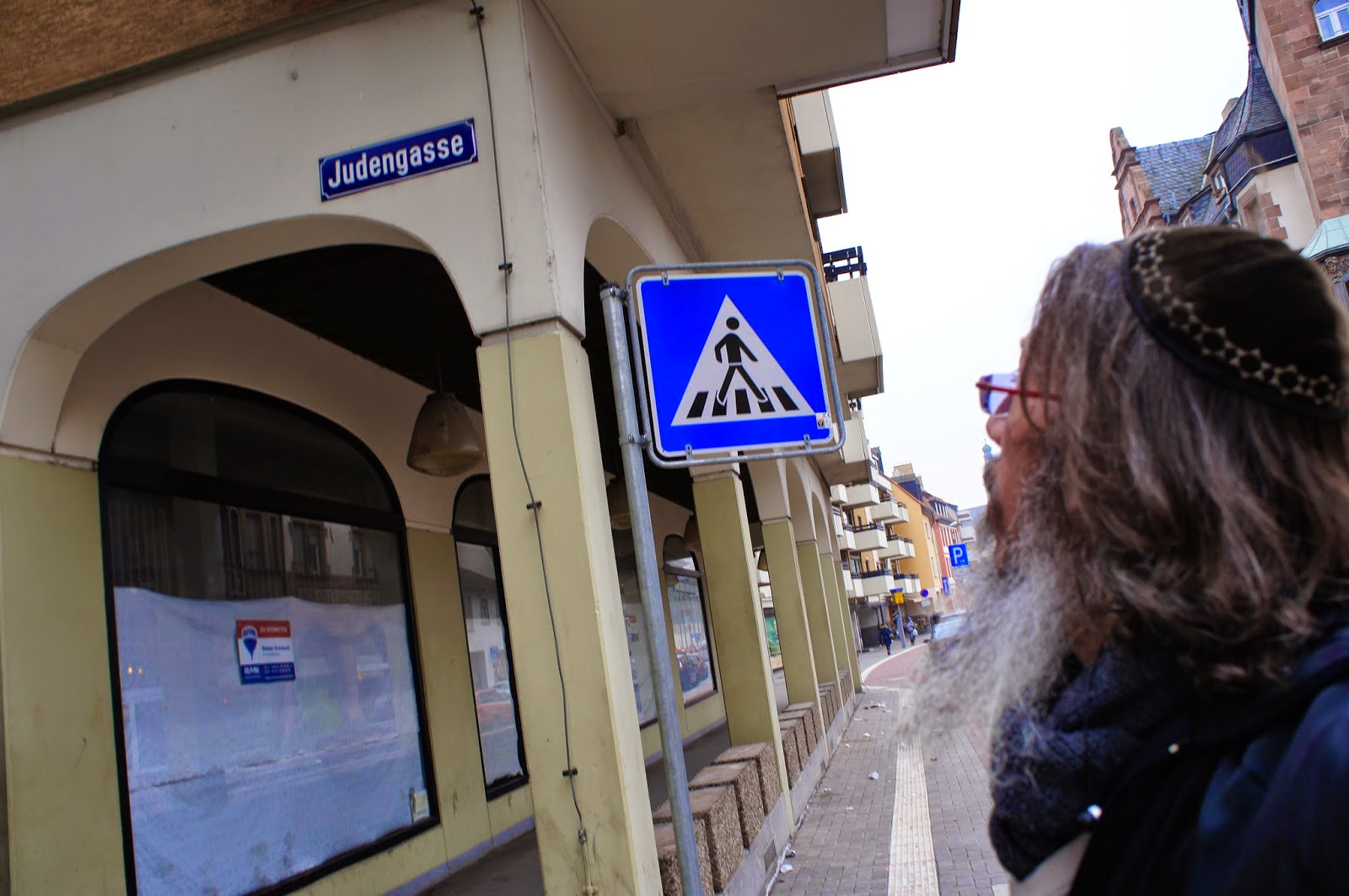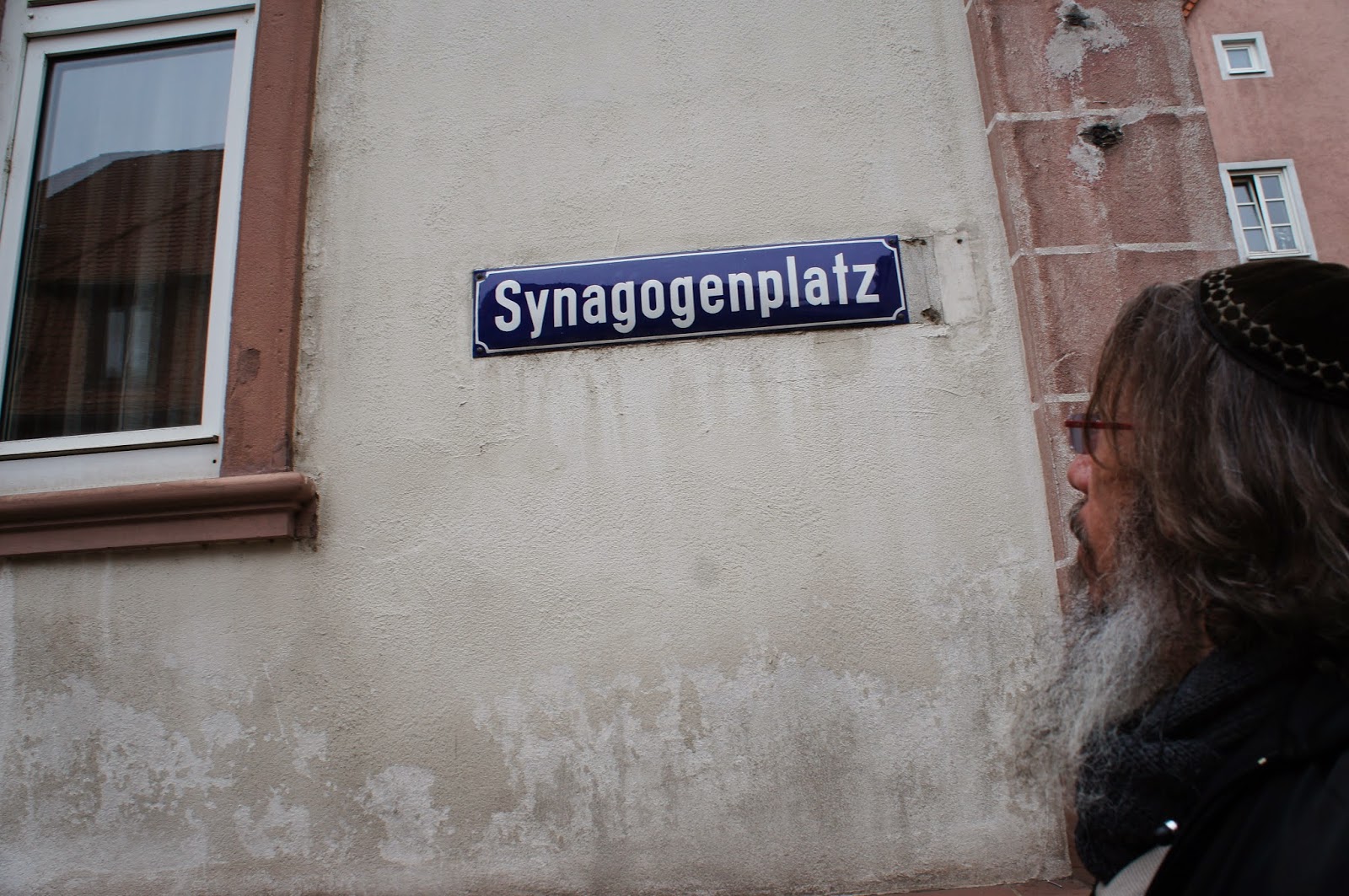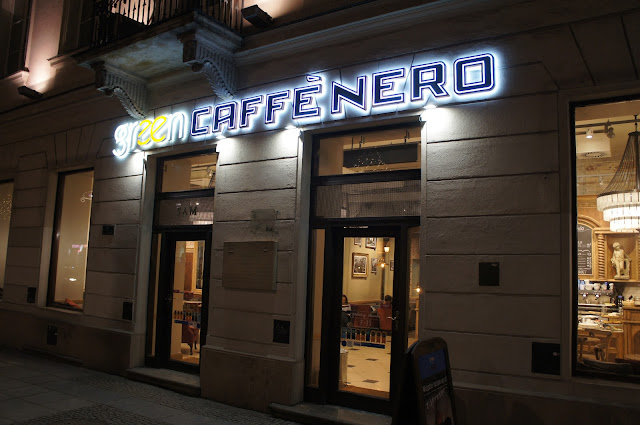 |
| The north façade of the entrance hall (centre). Right the former community house, left at the back the Rashi-House. |
Yom Shishi, Sivan 11, 5775. Friday, May 29, 2015.
Shalom! World.
The Jews and the Jewish Quarter in Worms

The famous Synagogue in Worms is documented as early as 1034 AD. It is the centre of the Jewish quarter which, in the second half of the 10th century, adjoined the north east curve of what was then the "inner" town wall between the Kammererstrasse and the Barengasse. Jews form Worms were regular visitors of the trade fair in Cologne from as early as 1000 AD.
 |
| The Baroque Aron Ha-kodesh, 1960 reconstruction of the original of 1704 on the east wall of the men's section. |

It was apparently not until around 1030, however, after the arrival of a large number of Jews from southern Europe, that the first Jewish community was founded and the stone Synagogue was erected. The gravestone of Jakob ha-bachur of 1076/77 is the first of an unbroken record of gravestone in the Jewish cemetery in Worms. The privilege issued by Emperor Henry IV, which exempted Jews and non-Jews in Worms from taxes in certain towns, is dated 18 January 1074; the Jewish houses along the town wall were mentioned for the first time around 1090.

At the time the Jewish quarter did not appear like a forcefully isolated "Ghetto", but rather like a voluntary cohabitation of a group of people of similar origin and social backgorund. Similar were, for example, the German quarter in Praha, the Friesian quarters in Cologne, Mainz and Worms, or the streets occupied by craftsmen in medieval towns.

The Jewish quarter in Worms consists of the large "Judengasse" , running parallel to the town wall from east to west, and the "Hintere Judengasse" which branches off to the south near the Synagogue. Work began in 1973 to carefully preserve and restore the medieval houses of the two Jewish streets, most of which have largely survived.
 |
Donor inscription of the Mikveh of 1185/86
"To erect a witness in Joseph, which was built from a desire for forecourts: look up to the hewn rock, you G'd-fearing people, which bears an inscription, and to the work which indicates: The stone will cry and answer from the wall and the Scantling from its rafters. He dug a well, erected the vault and cleared a path, a straight path, and the wall rests in its bay. For his money he had a harbour built inn the shadoww of wisdom; he stands benath the tree on the hill, in order to provide shade from the rays of the setting sun in its hut made of leather. It (the well) was dug by the pious, and (the earth) split by the nobles. He will feast on the rich harvest of his pleasures, and he will bear the belt of justice, and the truth will be his girdle."
|

The complex of the Synagogue or Synagogues was destroyed and altered several times between the 11th and the 18th century. Most recently (in 1938) it consisted of a Synagogue for men (Mannershule), a Synagogue to women (Weiberschul), an entrance hall, a bath (Mikveh) and the Rashi-Jeschiba, commonly referred to in Worms as the Rashi-Chapel. Next to this complex in the north was the community centre, which was acquired in 1876, and in the south the barroque-style (Klause) of medieval origin (most recently and old age home, demolished in 1971, since 1980/82 the Rashi-House and municipal archive).

The so-called Lewy Synagogue, which served as a Synagogue for other religious groups among the Jews in Worms, was erected in 1875 opposite the entrance hall of the women's Synagogue in the northern row of houses of the Judengasse. It was vandalized in 1938 and fell into disrepair. The building was further damaged by bombs in 1945 and demolished in 1947.
Shalom! Aleichem.
Suporte cultural: SOUL avec L'Integration d'Association avec Israel et dans le Monde/Fr .

 The famous Synagogue in Worms is documented as early as 1034 AD. It is the centre of the Jewish quarter which, in the second half of the 10th century, adjoined the north east curve of what was then the "inner" town wall between the Kammererstrasse and the Barengasse. Jews form Worms were regular visitors of the trade fair in Cologne from as early as 1000 AD.
The famous Synagogue in Worms is documented as early as 1034 AD. It is the centre of the Jewish quarter which, in the second half of the 10th century, adjoined the north east curve of what was then the "inner" town wall between the Kammererstrasse and the Barengasse. Jews form Worms were regular visitors of the trade fair in Cologne from as early as 1000 AD.

 At the time the Jewish quarter did not appear like a forcefully isolated "Ghetto", but rather like a voluntary cohabitation of a group of people of similar origin and social backgorund. Similar were, for example, the German quarter in Praha, the Friesian quarters in Cologne, Mainz and Worms, or the streets occupied by craftsmen in medieval towns.
At the time the Jewish quarter did not appear like a forcefully isolated "Ghetto", but rather like a voluntary cohabitation of a group of people of similar origin and social backgorund. Similar were, for example, the German quarter in Praha, the Friesian quarters in Cologne, Mainz and Worms, or the streets occupied by craftsmen in medieval towns.  The Jewish quarter in Worms consists of the large "Judengasse" , running parallel to the town wall from east to west, and the "Hintere Judengasse" which branches off to the south near the Synagogue. Work began in 1973 to carefully preserve and restore the medieval houses of the two Jewish streets, most of which have largely survived.
The Jewish quarter in Worms consists of the large "Judengasse" , running parallel to the town wall from east to west, and the "Hintere Judengasse" which branches off to the south near the Synagogue. Work began in 1973 to carefully preserve and restore the medieval houses of the two Jewish streets, most of which have largely survived.















Comments
Post a Comment